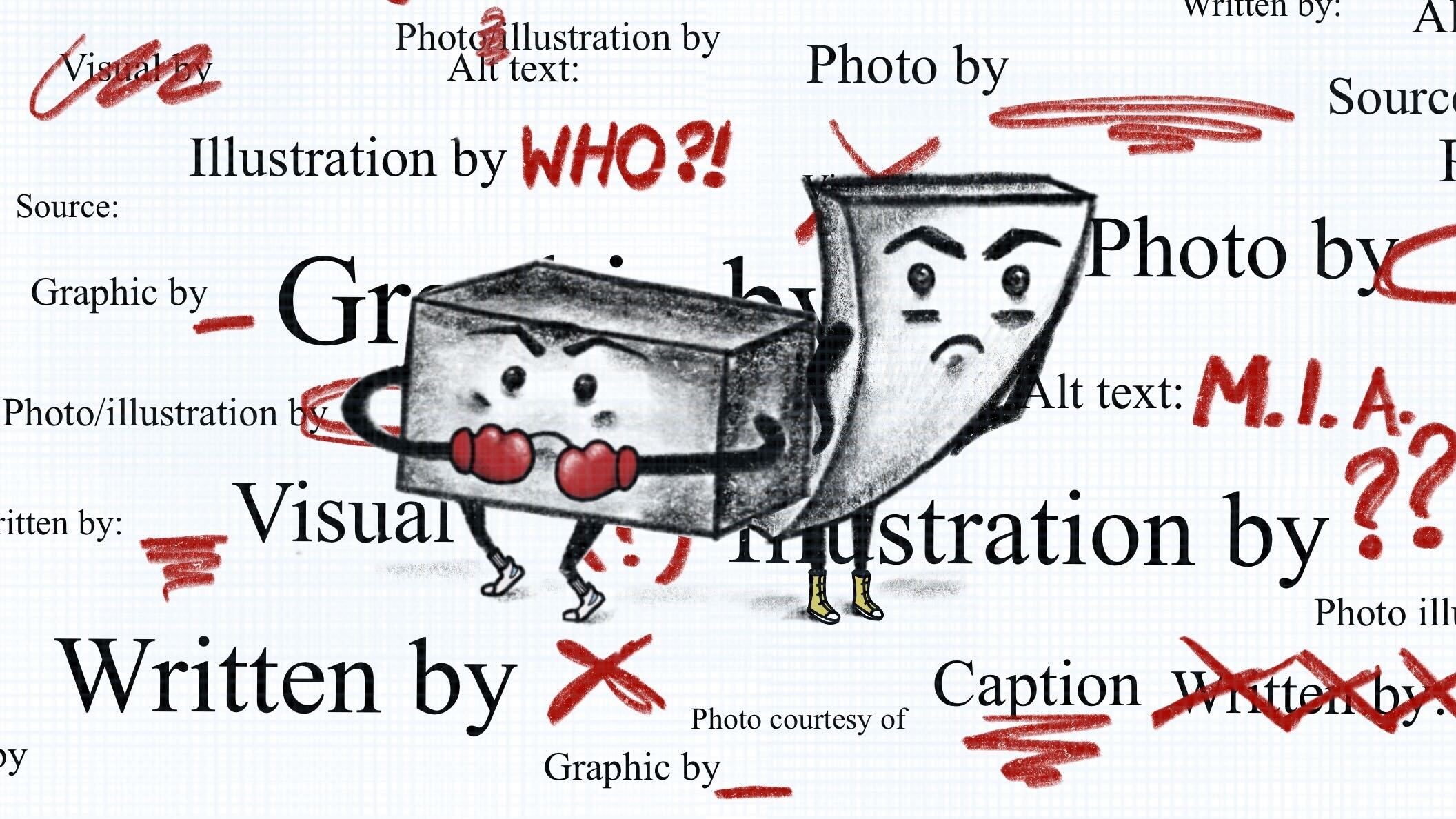They say a picture is worth a thousand words. But are all those words spelled right, grammatically correct, and actually making sense? You might want to check that. Today, in the NSFP Copy Team’s exclusive series, we’ll be looking at commas.
Salutations!
While that greeting may seem pretentious, try to remember that it was originally a spider who said it to a pig. And if Charlotte and Wilbur are unfamiliar to you, we must urge you to pick up a book. As dutiful members of The New School Free Press copy team, you should only expect us to greet you this way. Lording big, sophisticated words over you… We’re kidding, for the most part.
While the copy team is usually behind the scenes, today we put our voices on the page — or at least noticeably so. Because, really, we’re always there: capitalizing, adding commas, turning en dashes into em dashes, and fixing typos. The little things that make an article — yeah, that’s us. Thanks for noticing.
And speaking of commas…
Commas have become something we know we’re supposed to use, but we don’t exactly know how or why to use them. So we revert to thinking, “That’s what they told us to do in high school, right?” Wrong!
Using commas is not a guessing game.
Unfortunately, a lot of grammar conventions have gone this way after we got fed up with teachers telling us we can’t start a sentence with “and” or “because” (fake rules). Because (see!) how are we supposed to know what rules are real and necessary or simply made-up for the sake of K-12 education?
As you came to college, you probably also realized that you will not be asked to write a 45-minute timed essay about a random subject, with no research. Thanks, AP English, you little liar.
While there are many comma rules, the five below are the ones the NSFP Copy Team think are the most important to keep in mind.
- Commas and coordinating conjunctions (FANBOYS)
No, we did not just insult you. Though if you’re a fan of grammar, we do salute you. FANBOYS stands for each of the coordinating conjunctions: for, and, nor, but, or, yet, so. When you see one of these in the middle of a sentence, you should immediately be suspicious and look for a comma, sussing out its necessity.
Here’s the hard and fast rule: if an independent clause (one that could stand on its own) follows a coordinating conjunction, then use a comma. E.g. “John used a comma, and he did it so well.” If a dependent clause follows, then don’t use a comma. E.g. “Sarah didn’t use a comma and felt very good about her choice.”
Do not just include a comma for aesthetics because you think “it looks right.”
- Using commas with quotes
If you know how to read, you’ve definitely encountered quotes, whether in the form of fictional dialogue or journalistic interviews. Because writing quotations isn’t on the AP Language rubric, it’s probably the K-12 school system that has failed you (once again) in your comma knowledge.
“Let’s go to the market,” Sarah said, is the proper way to use a comma with a quotation. The comma goes inside the quotation marks and attaches a dialogue tag (“Sarah said”), making it all one sentence. Do not use a comma if attaching a dialogue attribute (an action or description — not the way a person said something) without a dialogue tag. E.g., “Let’s go to the market.” Sarah smiled and grabbed her basket.
Remember, dialogue tag = comma, and dialogue attribute = period.
- Comma splices
Ew, splice! Even the word is yucky. A comma can help you connect ideas, however only if one idea is an independent clause (can stand on its own) and the other is a dependent clause (cannot stand on its own). Two independent clauses cannot be joined by a comma alone! Obviously, they’re just too independent to be together; they want their own space.
For example, “John likes reading, he doesn’t enjoy math.” To fix this, we can replace the comma with a period or semicolon, or we could add a coordinating conjunction. Now, it can be “John likes reading. However, he doesn’t enjoy math.”
- Restrictive vs. nonrestrictive commas
When you’re reading something aloud, you might pause every time you reach a comma. And while that’s fine and dandy, that same pause doesn’t always apply to writing. Because last time I checked, you don’t pause to breathe every time you write a comma.
To break it down, a restrictive clause includes information necessary to the sentence’s meaning and doesn’t require punctuation. For example, “Writers who don’t know how to use commas are likely to have bad grammar.” If the restrictive clause, “who don’t know how to use commas,” was removed from the sentence, the sentence would no longer have the intended impact.
On the other hand, a nonrestrictive clause adds information to a sentence without changing the meaning — for example, “Sarah, a member of the NSFP, is an accomplished copy editor.” The nonrestrictive clause, “a member of the NSFP,” describes the subject, Sarah, without altering the sentence’s meaning: “Sarah is an accomplished copy editor.”
- The Oxford comma
Ah, everyone’s favorite comma. The Oxford comma is the most beloved (and most controversial) comma in the history of commas, for good reason too. Without it, your writing just looks like something’s missing…
For example, “Sarah bought apples, oranges, and bananas.” The Oxford comma refers to the comma after the word oranges. Its sole purpose is to separate the final item in a list.
The Oxford comma is a style choice, meaning your sentence will still be grammatically correct whether you use it or not. AP style does not use Oxford commas, whereas MLA, APA, and Chicago do. However, choosing not to use it can lead to confusion.
For example, “I invited my parents, John and Sarah.” This sentence could be interpreted as your parents are John and Sarah, and if they are, then OK, but if not, using the Oxford comma would avoid that confusion.
If you would not like your grammar choices to traumatize others, please double-check those commas! But seriously, clean copy makes you sound polished and professional. Take it from the NSFP Copy Team: commas are great when you use them correctly.








Leave a Reply